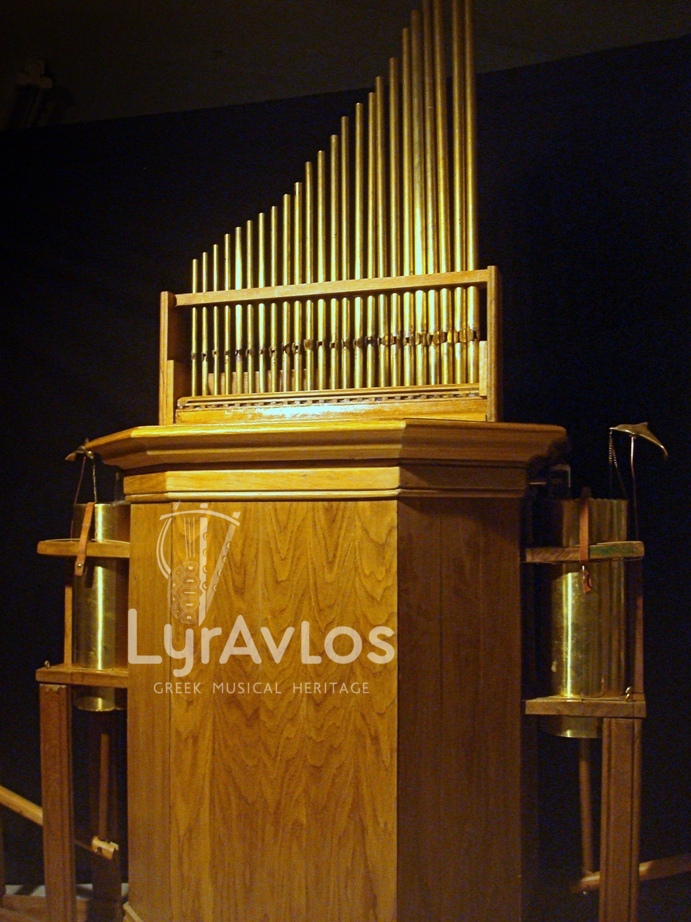Musical Instruments
of the Ancient Greeks
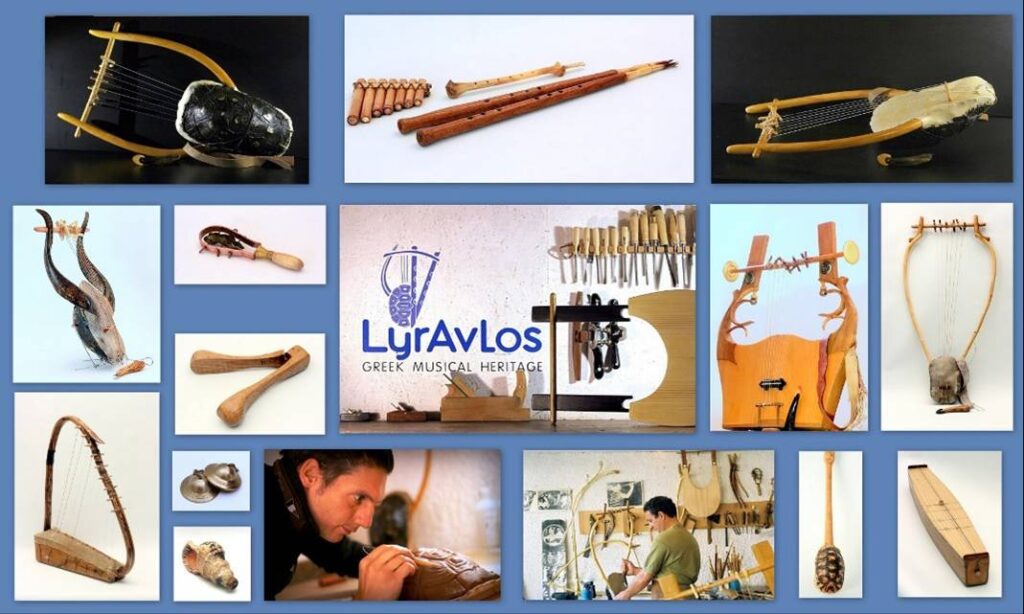
Pictorial decorations, pot decorations, relief, mosaics, statues etc are a rich source of information concerning ancient musical instruments. Unfortunately very few fragments of instruments have been discovered but they are quite illuminating. Finally, the various preserved texts and works of ancient Greek literature are an invaluable source of information.
We never have been interested in closing these instruments into a museum, nor did we intend them to be sold as souvenirs to visitors of Greece. They are fully functional instruments and they travel throughout the world, they are moving young and old with their history and sound, opening up horizons and giving inspiration to those who want to deal with history, music, mathematics, physics, language, theater, and, of course, the making of instruments.
STRINGS
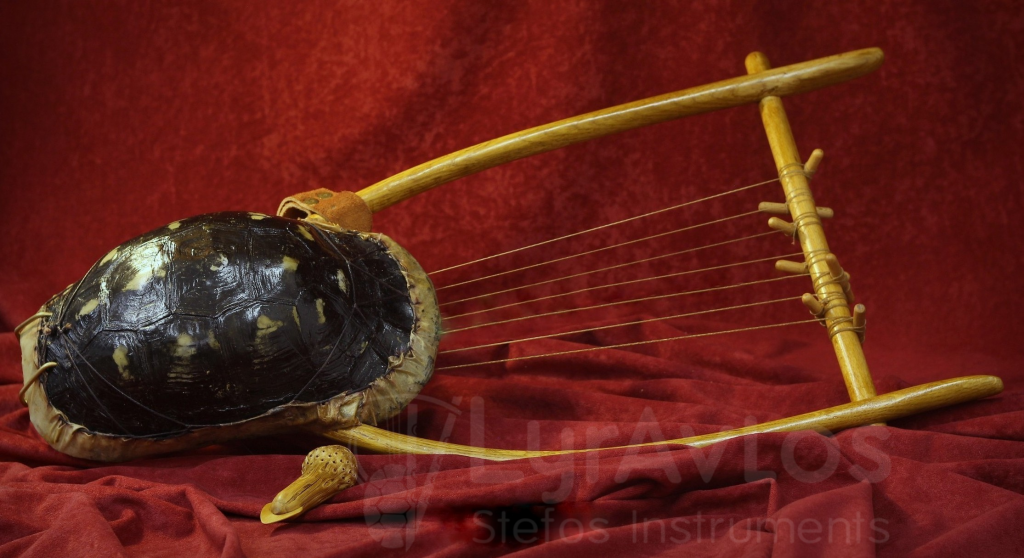
THE LYRE: The most widely used and popular string instrument in Ancient Greece was the lyre as it was played not only by professional musicians. It was a symbol of Apollo and was not used in outdoor performances. It was the musical instrument that was primarily used as part of young
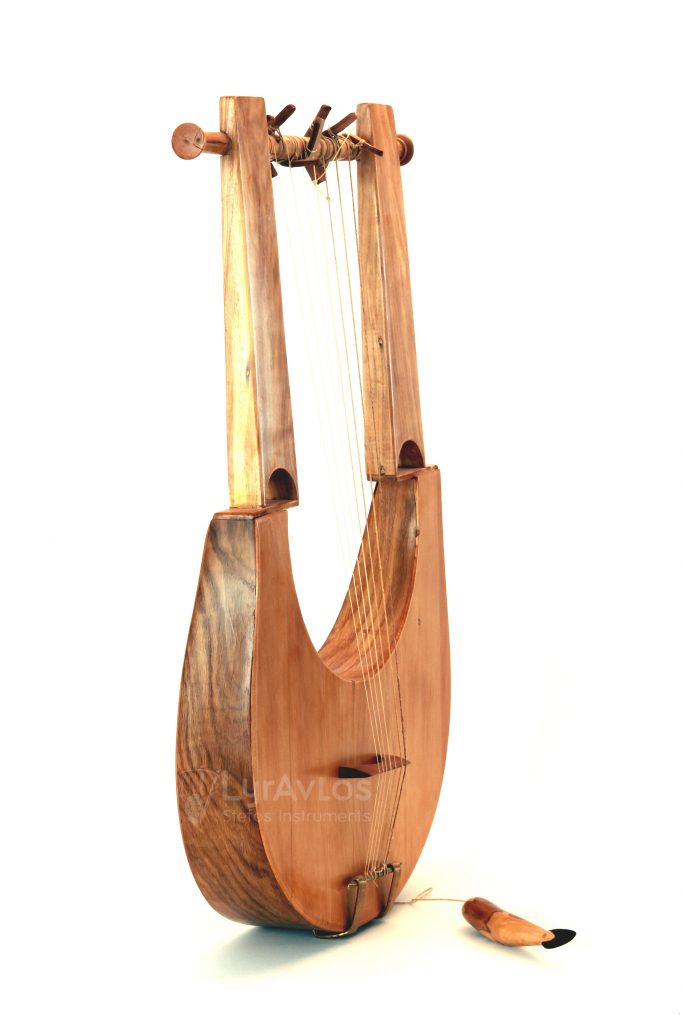
people’s education and could be characterized as the national instrument of the ancient Greeks.
PHORMINX: Perhaps it is the earliest form of the ancient guitar and was mainly associated with the presentation of Homeric epics and rhapsodies. It was considered to be a sacred instrument and perhaps the oldest string instrument.

PANDOURA OR PANDOURIS: It is a three-stringed musical instrument and is considered the ancestor of the lute. It was also known to the ancient Greeks as trichordon (three-stringed).
PERCUSSIONS
TYMPANON: Like most percussion instruments it was not used only for producing music but also in religious ceremonies and worship. It was an instrument primarily played by women and was mainly used in religious worship such as the Bacchanalia.
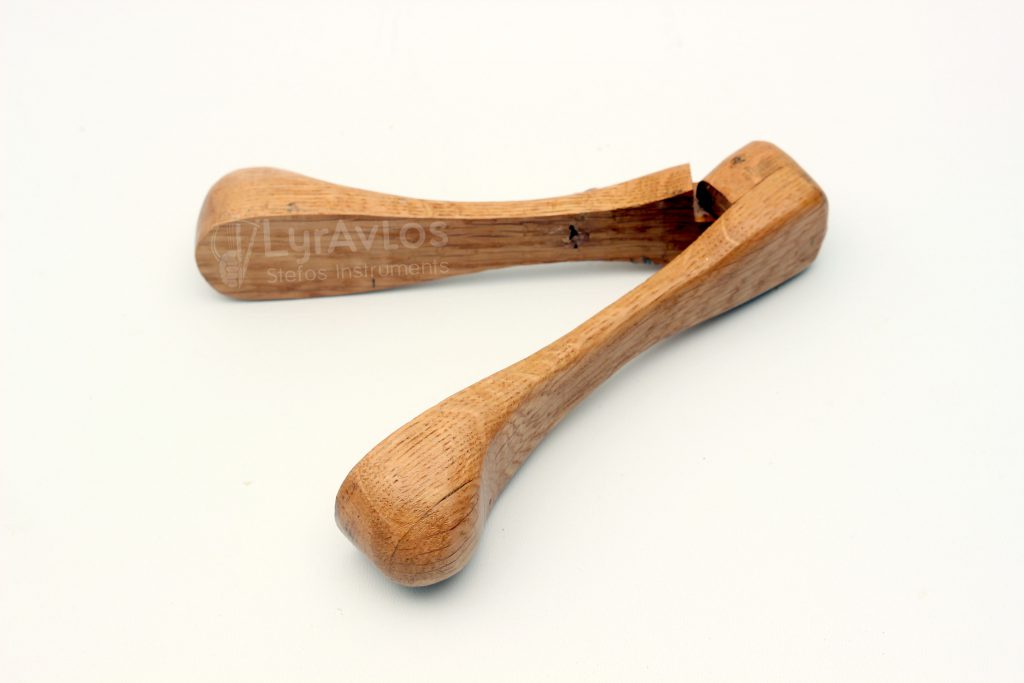
KROTALON OR KREMVALON: Percussion instruments which were the wooden equivalent of the modern castanets. They were used by women to keep the rhythm for the dancers.
KYMVALON: It was made of metal and was the metallic version of krotalon. It was primarily connected with Bacchus worship. It was of Asiatic origin and despite being used, Kymvalon was not considered an important instrument.
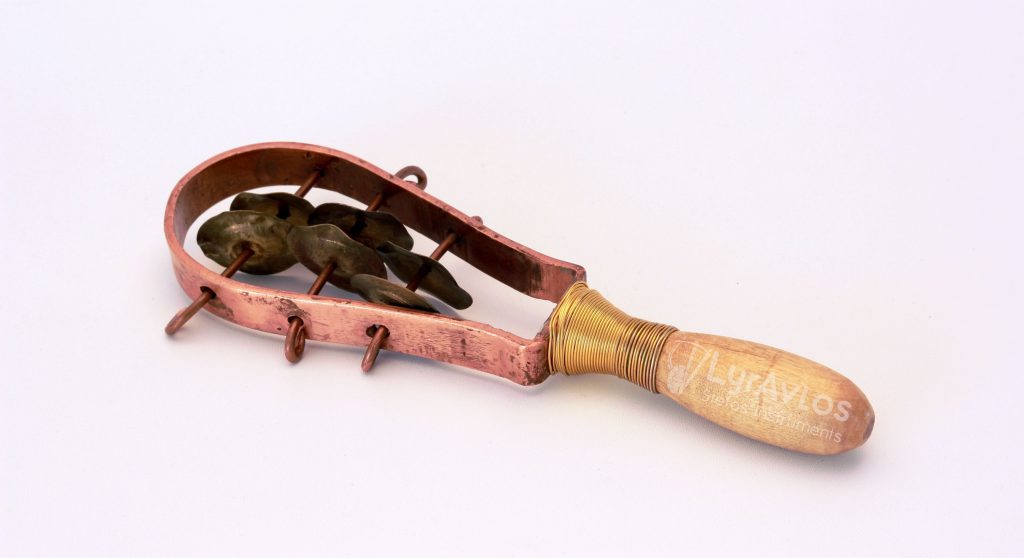
SEISTRON: It is a percussion instrument probably of African/ Egyptian origin which, due to its strident sound, was used to accompany in performances or to keep a certain rhythm.
LyrAvlos uses authentic, reconstructed, musical instruments at concerts, special events, educational seminars, and in general at all of its appearances The Reconstruction of Authentic Instruments
The Reconstruction of Authentic Instruments

Ancien Guitar (kitharis)
Hydravlis
After many years of exhaustive research of all kinds of sources, the construction I propose was mainly based on the detailed descriptions we have from Heron and Vitruvius as well as on the two specimens of Hydravlis discovered in the excavations at Dion of Olympus and Aquincum of Hungary respectively. It is the first polyphonic keyboard in history, the ancestor of the present ecclesiastical organ. It was built in Alexandria by Ctesivius (3rd century B.C.) considered as the founder of the School of Alexandrian Engineers (Museum) and father of the “Pneumatike”, i.e. the science that deals with air (pneuma) and its uses. He is best known for three achievements: the depressing suction pump, the hydraulic clock, and the hydraulic musical instrument. With a long and continuous presence (Ancient Roman Empire, Byzantium, Roman Catholic Church), Hydravlis and later the ecclesiastical organ contributed greatly to the formation of the great structure of Western polyphonic music.
